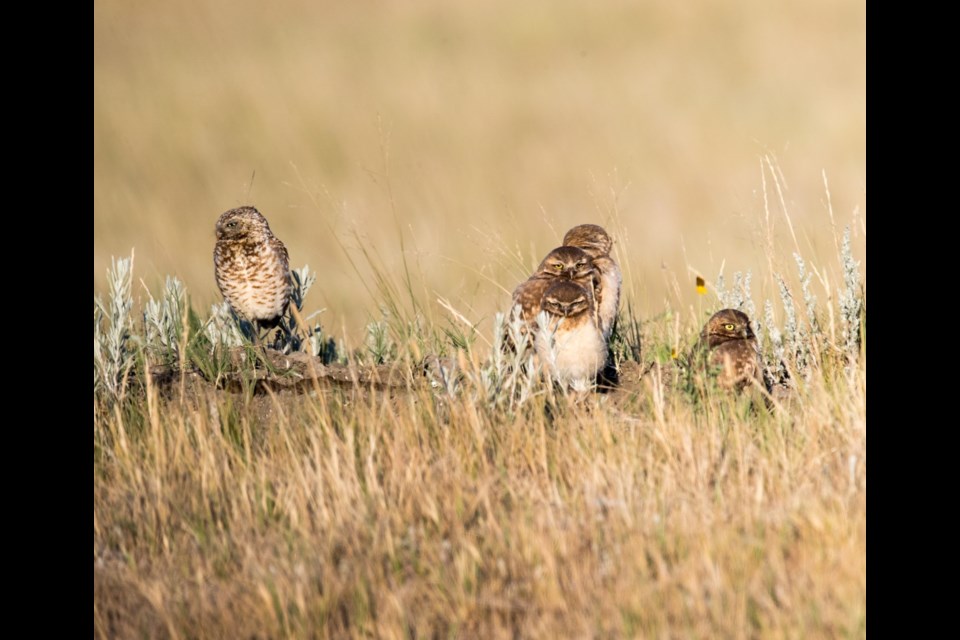REGINA – The arrival of summer signals the beginning of family vacations and road trips across the prairies. This also includes young burrowing owls, who are now starting to leave the nest and forage for themselves after weeks of С����Ƶ provided for by their parents.
The young owls are practising their hunting and flying skills, and venturing out on their own to other burrows nearby.
“At dusk, the road surface tends to be warmer than surrounding grasslands, attracting many small insects and rodents,” explains Grace Pidborchynski, co-ordinator of Operation Burrowing Owl at Nature Saskatchewan.
“As a result, young owls are also attracted to the road and ditch when they begin searching for prey.” This can lead to vehicle collisions as the owls will fly low to the ground in search of food. Motorists are asked to be alert and on the lookout for owls as they drive on highways and the many grid roads that cross our province.
The burrowing owl population across the prairies has been steadily declining since the mid-80s, making the survival of each juvenile owl critical for the survival and growth of the species. Motorists can help reduce the risk of owl-vehicle collisions by slowing down near known or potential nest sites and С����Ƶ on the lookout for low-flying birds. Slowing down can also increase your chances of spotting this endangered owl!
Burrowing owls are about nine inches tall, with mottled brown and white feathers, bushy white ‘eyebrows’, and long featherless legs. They are often found nesting in native prairie that has been well grazed, as the short grass helps them to spot predators. burrowing owls nest in abandoned burrows excavated by badgers, ground squirrels, or other burrowing mammals. They are most often seen standing on their burrow, sitting on nearby fence posts, or foraging in ditches.
Nature Saskatchewan has been involved with the conservation of the burrowing owl since 1987, relying on the help of landholders and the public. Operation Burrowing Owl partners with stewards across southern and central Saskatchewan and uses voluntary agreements to conserve the rapidly disappearing habitat required by the owls, as well as to monitor the Saskatchewan population. The program works alongside steward practices, and the land continues to be used in a way that benefits the steward. If you see a burrowing owl, please give us a call on our toll-free Hoot Line, at 1-800-667-HOOT (4668) or email [email protected]. “You will be helping to monitor the population and aid with conservation efforts,” Pidborchynski mentions. All caller and program participant information is never shared without permission.




